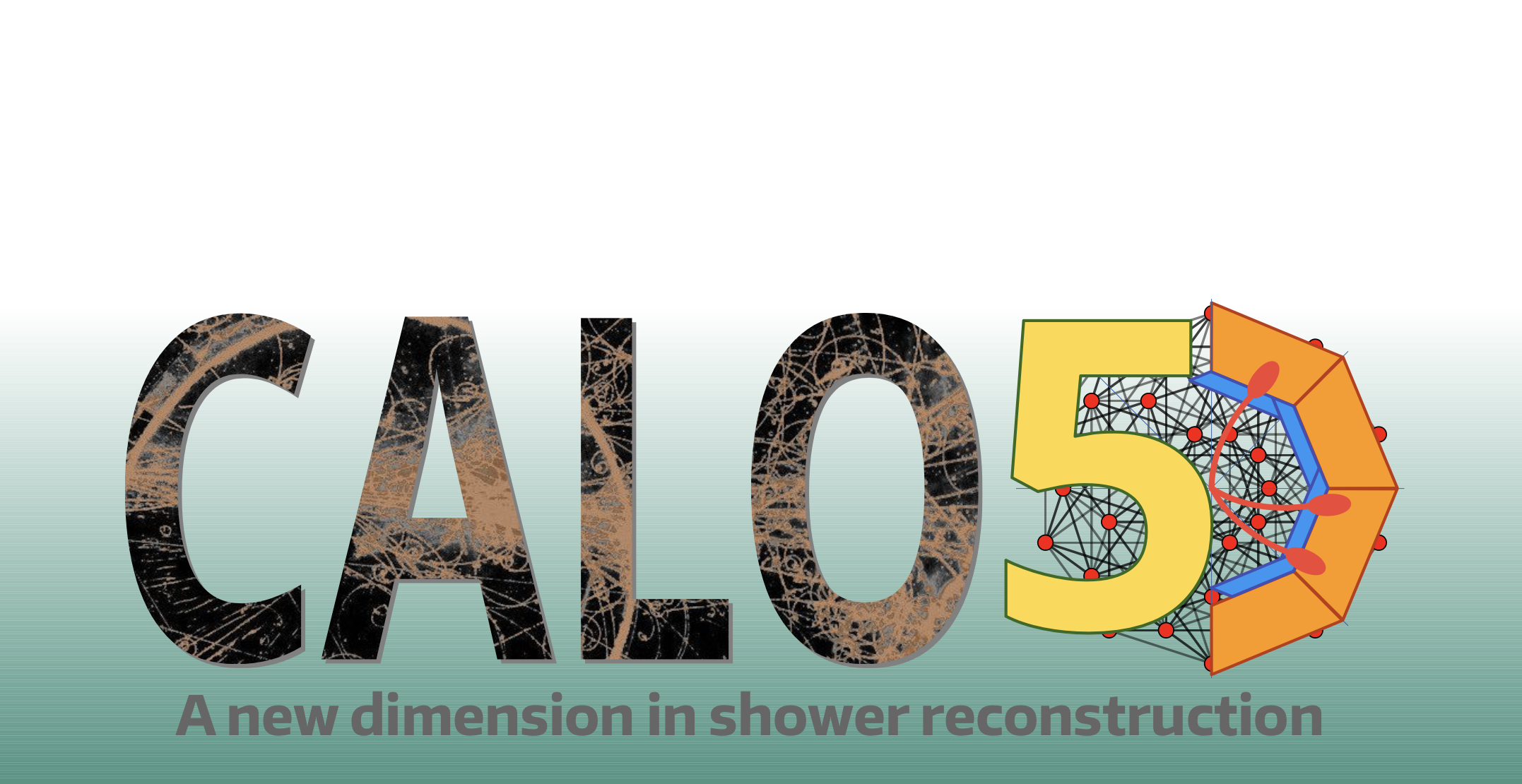
CALO5D
- contact:
Frank Simon, Karlsruhe KIT, frank.simon@kit.edu
Lucia Masetti, Mainz JGU, masetti@uni-mainz.de
Roman Pöschl Paris-Saclay, IJCLab, roman.poeschl@ijclab.in2p3.frKatja Krüger, Hamburg, DESY, katja.krueger@desy.de
Vincent Boudry, Palaiseau,LLR, boudry@llr.in2p3.fr - funding:
The French Agence Nationale de Recherche (ANR) and the German Deutsche Forschungsgesellschaft (DFG).
- Partner:
Hamburg (DESY), Karlsruhe (KIT), Mainz (JGU), Paris-Saclay (IJCLab), Palaiseau( LLR)
The French-German project CALO5D will combine detailed information on particle showers provided by imaging calorimeters (CALO) with precise time information at the cell level, in addition to space and local energy (5D).
CALO5D
Introduction
CALO5D will combine detailed information on particle showers provided by imaging calorimeters (CALO) with precise time information at the cell level, in addition to space and local energy (5D). The exploitation of the information will be assisted by modern machine learning algorithm with the goal to improve the performance of energy reconstruction and particle flow algorithms. The capability of the tools will be demonstrated with performance studies on selected physics channels central to the physics case of future Higgs factories. The results of this project will have a fundamental impact on the design of the next generation high energy physics experiments. To our knowledge, CALO5D will be the first project worldwide to address the application of timing in calorimeters at future Higgs factories in a consistent and coordinated way within a single project.
Motivation
CALO5D targets at a Higgs factory as a next energy-frontier collider. A Higgs factory is an electron-positron collider capable of running at the particle production thresholds of the electroweak bosons (Z pole, W pairs), the Higgs production threshold and at least up to the top pair production, possibly in successive steps. The High Luminosity Upgrade of the Large Hadron collider (HL-LHC) will provide insights, e.g., the measurement of rare decays such as the Higgs boson decaying to a pair of muons as well as improved precision on the measurement of Higgs branching ratios and possibly a first glimpse at the Higgs self-coupling. The Higgs factories will increase the sensitivity to physics beyond the Standard Model by an order of magnitude. For the planned detectors at such a facility, imaging calorimeters combined with particle flow algorithms have emerged as the de-facto standard concept, following intensive development in the context of the International Linear Collider ILC and the Compact Linear Collider CLIC. These detector concepts and the associated reconstruction paradigms have also been adopted for the circular colliders under study, the FCC-ee and the CEPC.
The precise reconstruction of all products of a particle interaction is of critical importance for the measurement of the properties of elementary particles and their interactions. The detectors at future colliders use highly granular “imaging calorimeters” to provide detailed three-dimensional spatial information of the energy of particle showers in the detector. The information provided by imaging colorimeters is exploited with sophisticated particle flow algorithms that optimally combine the information available from the different subsystems of the detector.
The project is set for a duration of three years to achieve its objectives:
- Implementation: The proper implementation of time information in the software tools is the basis for obtaining credible results on the benefit of timing in future experiments.
- Extension: Extension of the particle flow algorithms to incorporate timing information for objects and use of Machine Learning techniques.
- Impact: Determination of the impact of the enhanced algorithms on benchmark physics processes.
- Design: Determination and definition of the design requirements for an optimised time resolution of electromagnetic and hadronic calorimeters.
Technology
CALO5D will combine the detailed information on particle showers provided by imaging calorimeters (CALO) with precise time information at the cell level, in addition to space and local energy (5D). This will improve the performance of energy reconstruction and particle flow algorithms. The capability of the tools will be demonstrated with performance studies on selected physics channels central to the physics case of future Higgs factories. The result of this project will have a fundamental impact on the design of the next generation high energy physics experiments.
Links
GIT: https://gitlab.in2p3.fr/calo5d
Meeting agenda: https://indico.desy.de/category/1107

